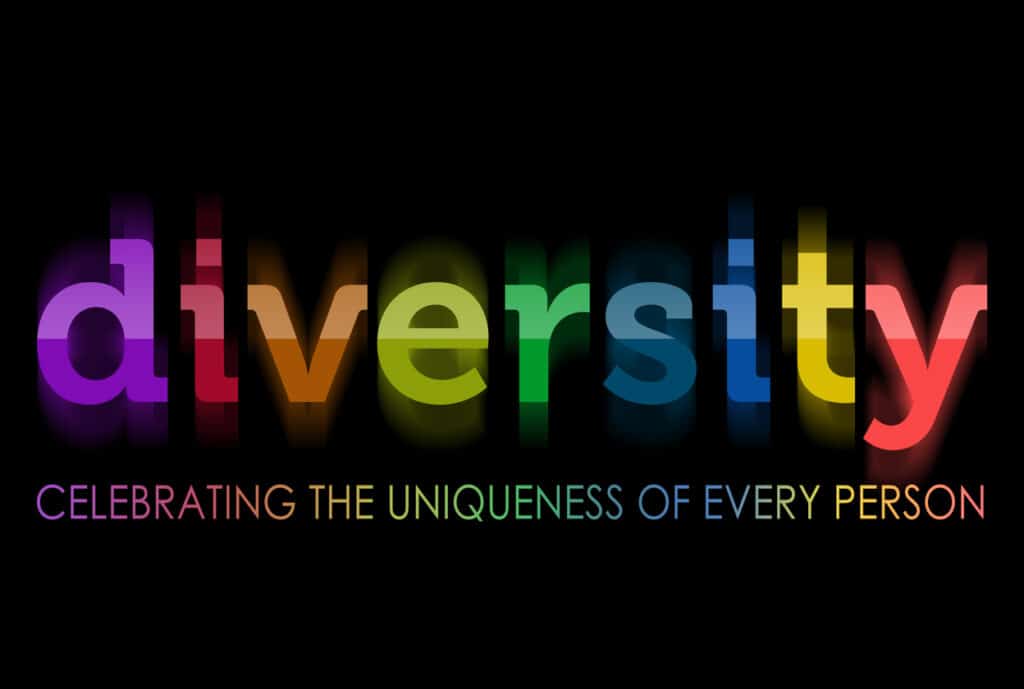
Diversity leadership is more than a buzzword. You’ve probably heard the phrase quite a bit recently, but what does it really mean, and why should leaders in Australia care?
Australia thrives on diversity. From Indigenous and First Nations peoples to multicultural communities, our workplaces reflect a rich mix of cultures, experiences, languages and perspectives. So it makes sense that leadership should reflect this diversity too.
And that change must start with current leaders. Diversity leadership isn’t about handing over the reins, it’s about those already in leadership roles embracing difference, amplifying underrepresented voices, and driving inclusive practices from the top down.
Diversity leadership isn’t about ticking boxes or meeting quotas. It’s about genuinely embracing difference and building leadership teams that represent the people they lead and serve.
This article unpacks what diversity leadership means, why it’s vital for Australian organisations, and how leaders can take practical steps to embed it.
What Is Diversity Leadership?
At its core, diversity leadership means leading in a way that values and leverages people’s differences, whether that’s background, identity, lived experience or ways of thinking.
Researchers have defined diversity leadership as senior leaders shaping of the meaning of diversity within an organization by framing a vision for diversity and symbolizing the value of diversity in words and actions
But here’s the key: diversity leadership is about action, not just representation.
It’s not enough to have a few diverse faces in the room. True diversity leadership means ensuring those voices are heard, respected and able to influence decisions. It’s about creating an environment where everyone, no matter their background, feels safe and empowered to bring their whole selves to work.
We believe the responsibility for creating this environment, through fostering diversity and inclusion, rests on an organisation’s senior leaders.
Diversity leadership:
- Challenges the status quo
- Recognises and tackles unconscious bias
- Builds cultures where difference is celebrated, not just tolerated
- Sets a standard for inclusive behaviour
Put simply: it’s about making diversity work for your organisation, your people and your community. Importantly, diversity leadership doesn’t mean stepping aside, it means stepping up. Existing leaders are in the best position to create space, foster inclusion, and lead change by making equity a strategic priority.
Why Is Diversity Important in Leadership in Australia?
We all know Australia is diverse but why does leadership diversity matter so much?
- Smarter, Faster Decision-Making
Diverse teams deliver better results. Cloverpop research shows inclusive teams make decisions twice as fast, and with 60% better outcomes. Harvard Business Review found that inclusion boosts collaboration (+29%) and team performance (+17%). These improvements don’t just happen by chance—they stem from leaders who consciously foster environments where varied perspectives are encouraged and valued. - Innovation and Financial Returns
Diverse leadership enhances resilience and agility. Deloitte reports that inclusive organisations are 6 times more likely to be innovative and 8 times more likely to achieve better business outcomes. Innovation thrives when leaders deliberately create spaces where unconventional ideas can surface without fear of dismissal. - Talent Attraction and Retention
Today’s workforce wants inclusive workplaces. According to Randstad, 78% of employees say workplace equality impacts whether they stay in a role. Forbes shows that employees who feel included are more engaged and loyal. This isn’t just about attracting talent, it’s about retaining it by nurturing belonging and growth. - Improved Well-Being and Engagement
Giving people a voice reduces disengagement and boosts morale. McKinsey confirms that when inclusion is embedded and measured consistently, employee satisfaction improves and turnover drops. Leaders who regularly check in on inclusion metrics create environments where people don’t just survive, they thrive.
How to Increase Diversity in Leadership
Diversity Leadership requires both strategic intent and ongoing commitment. Here are five ways to foster it:
- Self-Reflection
Leaders must start with awareness. Unconscious bias training and regular reflection can help shift thinking and behaviour. It’s an ongoing journey, not a one-off checkbox. - Expand Recruitment Channels
Partner with organisations that support Indigenous Australians, women, LGBTQIA+ people, culturally diverse professionals and people with disabilities. Broaden your recruitment reach and look beyond traditional networks. - Transparent Development Pathways
Make promotion and leadership criteria visible and fair. Provide mentoring and sponsorship for emerging leaders from underrepresented backgrounds. Transparency ensures everyone understands how to progress. - Inclusive Leadership Development
Support leaders to develop skills in cultural awareness and inclusive team management. Diversity Council Australia (DCA) offers valuable local resources. - Measure and Act on Data
Track leadership diversity and inclusion with real data — including dimensions like socio-economic background and neurodiversity. As Harvard Business Review and McKinsey suggest, continuous measurement is key to meaningful change.

Measuring Inclusion in Real Time
Many organisations still rely on annual diversity reports, which fail to capture daily dynamics. That’s where real-time tools like Gender Fitness are making a real difference.
Developed in Australia, Gender Fitness connects to your calendar and collects post-meeting feedback to assess whether all voices are being heard. It focuses on two key indicators:
- A gender diversity score (based on meeting invite data)
- An inclusion score (from anonymous attendee feedback)
This isn’t another admin-heavy system. It integrates with Microsoft Active Directory and Outlook, pulling in meeting data automatically. After each session, participants complete a short anonymous survey on whether they had opportunities to contribute and felt respected.
Leaders then review simple, visual dashboards showing inclusion scores for individuals, teams and departments, benchmarked against organisational averages.
The outcome? A powerful, low-effort feedback loop that puts inclusion on the radar every day, not once a year. Employees can access their own feedback too, supporting shared accountability.
As Gender Fitness CEO Ken Barton puts it, “Diversity without inclusion is a revolving door. People might join your organisation, but if they don’t feel safe or seen, they won’t stay.”
Actionable Strategies Backed by Data
Sustaining inclusion requires daily habits, not just occasional training. Harvard Business Review notes that inclusive leaders consistently show fairness, respect and a visible commitment to equity. These traits directly influence whether employees feel they belong and are willing to share ideas.
Gender Fitness dashboards help embed these traits. By showing who’s speaking up and how contributions are received, they help leaders course-correct early before disengagement sets in.
Importantly, when everyone can view their own scores, inclusion becomes a shared priority, not just an HR issue.
Lead the Way with Diversity Leadership
Inclusive cultures thrive when measurement meets momentum. When you can clearly see where participation stalls and where it thrives, you can act faster and smarter. Targeted coaching, policy changes and recognition become more precise and more powerful.
As McKinsey and Deloitte show, inclusive organisations are more agile, more innovative, and more likely to hit their financial targets. And with daily insights, progress becomes part of your rhythm, not a reaction after the fact.
Ready to Lead with Purpose?
Diversity leadership isn’t about giving up power, it’s about using it more effectively. Organisations that embed inclusion into their leadership approach will be better positioned to innovate, connect and serve their communities.
Want to see how it works in practice? Book a Gender Fitness demo, connect your calendar, and start turning daily interactions into measurable change. Your teams and your bottom line will thank you.
References Cited
- Martins, L. L. (2020). Strategic Diversity Leadership: The Role of Senior Leaders in Delivering the Diversity Dividend. Journal of Management, 46(7), 1191-1204. https://doi-org.ezproxy.newcastle.edu.au/10.1177/0149206320939641 (Original work published 2020)
